Photographing Temples in Thailand: Light, Respect, and Sacred Moments
- Tatiana Mocchetti
- Jul 15
- 6 min read
More Than a Place of Worship
Temples in Thailand are not just architectural wonders — they are living, breathing spaces of devotion, community, and quiet rituals. For street and documentary photographers, they offer an extraordinary opportunity to capture moments of serenity, spiritual dedication, and cultural heritage. But photographing in temples requires more than a good eye — it demands awareness, humility, and deep respect for the people and practices within.
In this article, we’ll explore what to look for when photographing inside or around a Thai Buddhist temple, how to approach monks with sensitivity, and offer a gentle introduction to monastic life. Whether you're an experienced photographer or a curious traveler with a camera, these insights will help you document temple life with both grace and intention. The goal is not to take just beautiful images, but to tell visual stories that honor the sacred nature of these spaces and the people who move quietly through them.
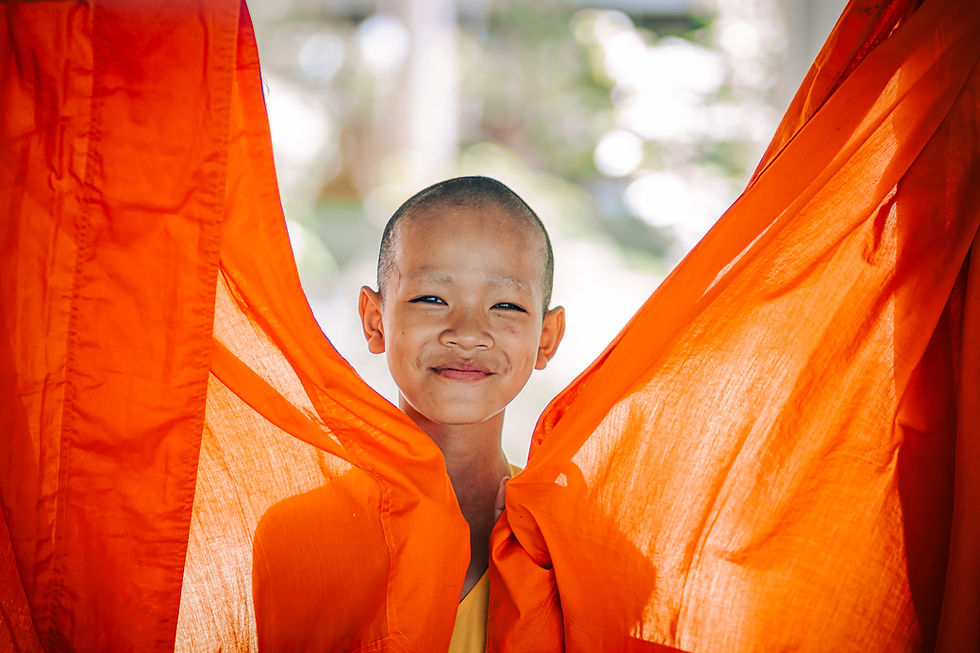
1. Understanding the Temple Space
Thai temples (or wat) are composed of multiple zones, each with its own atmosphere and purpose: the viharn (prayer hall), ubosot (ordination hall), chedi or stupa (reliquaries), monk quarters, libraries, and public areas for laypeople. Understanding these spatial dynamics helps you move with greater awareness and avoid intruding on rituals or sacred moments.
Start your visit by walking the grounds without your camera raised. Let yourself sink into the atmosphere — observe the rhythms, the sounds, the scent of incense and flowers. Photographic opportunities will naturally emerge once you’re attuned. Look for symmetry, golden tones, textures on aging walls, offerings arranged with care, and quiet interactions between devotees and monks. Some of the most moving shots come not from ceremony, but from stillness — a novice sweeping the floor, a cat curled beside a Buddha statue, or light filtering through patterned windows.
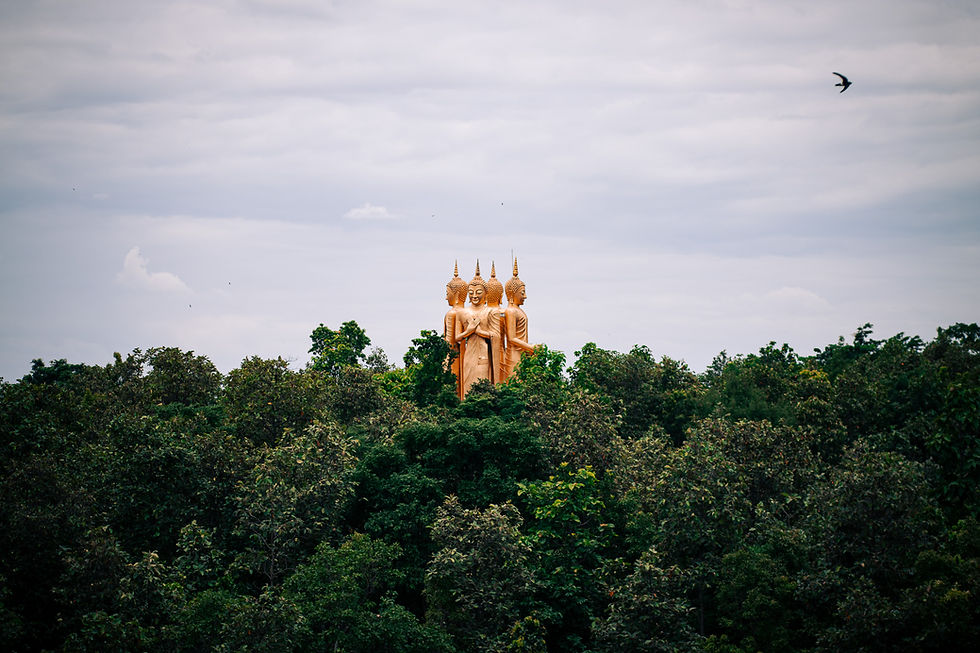
2. The Life of a Thai Monk: A Glimpse
To photograph monks with respect and understanding, it helps to know a little about their lives. Monks in Thailand live according to the Vinaya, a complex code of conduct comprising hundreds of rules. Their days begin before sunrise and follow a structure of chanting, meditation, alms collection, study, and temple maintenance. Meals are eaten before noon, and their possessions are minimal — a robe, a bowl, a few personal items.
Many monks you see, especially novices, are only in robes temporarily. Some stay for weeks, others for years. Regardless of their duration, their commitment during that time is sincere. Their lives are disciplined, but often gentle and approachable.
As a photographer, you might observe monks in various quiet moments: folding robes at dusk, reading under trees, arranging flowers before a ceremony. These glimpses into their world are gifts — treat them as such. A warm smile, a respectful wai (palms together), and a moment of patience before lifting your camera can lead to genuine connection and powerful, respectful images.

3. Photographing Monks Respectfully
Photographing monks — especially up close — requires care, cultural understanding, and often, permission. Here are a few key guidelines to follow:
Always ask permission when taking a portrait or photographing up close. A simple gesture, eye contact, or smile can help you gauge comfort.
Never touch a monk. This is especially important for women, who should avoid physical contact and maintain a respectful distance.
Avoid positioning yourself higher than a monk when seated or walking nearby. In Thai culture, social and spiritual hierarchy is expressed physically — being lower is a sign of respect.
Don’t interrupt or obstruct rituals or prayer. If monks are chanting, meditating, or walking in formation, stay discreet and avoid drawing attention.
Never use flash inside temple halls, as it’s disruptive and sometimes forbidden.
When in doubt, err on the side of humility. Monks are spiritual practitioners, not photo subjects. Approach with the same care you would in any sacred space. If you do take a portrait, consider returning with a print. This small gesture often builds bridges beyond language.
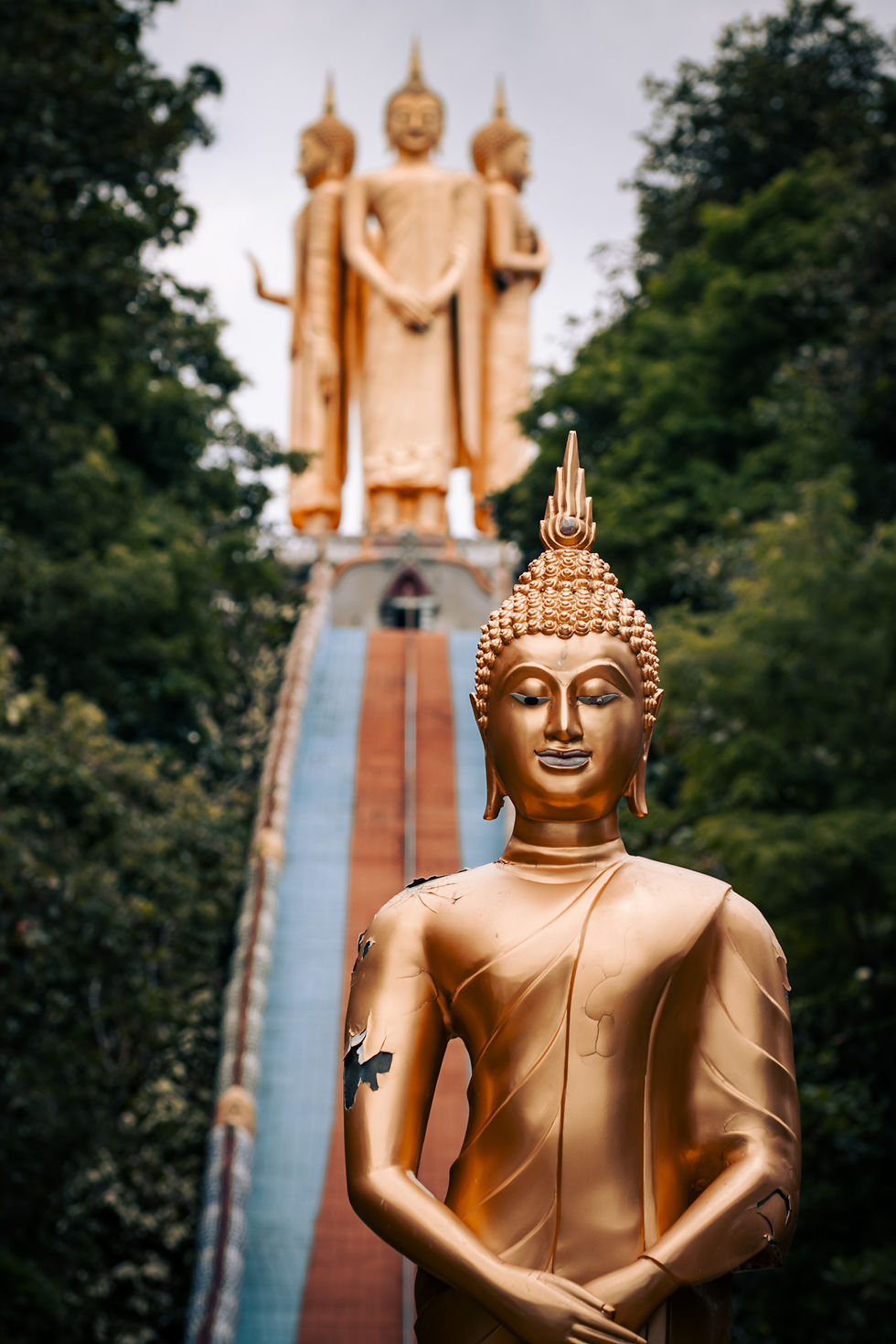
4. What to Photograph in and Around a Temple
a. Light and Shadow
Light plays differently in temples — it filters through open roofs, dances across gilded statues, and creates natural spotlights in dim halls. Use early morning and late afternoon to capture soft golden hues, or photograph incense smoke spiraling upward in late morning stillness. Let light be more than a technical consideration — let it become a subject.
b. Daily Monastic Life
There is beauty in the routine: a monk sweeping leaves, novices folding robes, a bell being rung to signal meditation. These actions are quiet, repetitive, and filled with grace. Try capturing a sequence of daily movements rather than isolated shots — they tell the fuller story of temple life.
c. The Human and the Sacred
Temples aren’t just home to monks — they are community spaces. Photograph moments where the sacred and the ordinary overlap: a child mimicking prayer beside an elder, a layperson lighting incense while checking their phone, or an old woman seated beneath a mural. These juxtapositions bring emotional depth and storytelling to your images.
d. Architecture and Details
Zoom in on textures: cracked paint on columns, lotus-shaped carvings, weathered prayer flags. These elements ground your photos in place and time. Don’t just shoot the Buddha statue — photograph the offering bowl, the faded mural beside it, the way light falls across his folded hands. These details create intimacy and authenticity.
e. Moments of Exchange
Some of the most human moments happen in passing: a monk speaking gently with a lay visitor, offerings being received, or a brief smile between an elder and a novice. These exchanges often happen quickly — keep your camera ready, but your presence soft. Anticipate, don’t impose.

5. Ethical Considerations
Temple photography is about more than visuals — it’s about intent. Consider not just whether you can take the photo, but whether you should.
Avoid photographing:
People in states of deep grief or private prayer
Rituals that explicitly ask for no photos
Children or novices without permission from guardians or elders
Monks when they are bathing, changing, or resting
If someone looks uncomfortable — stop. If there’s a sign asking for no photography — respect it. Ethics in photography is about honoring the dignity of your subjects. And sometimes, the most powerful thing you can do is lower your camera and simply witness.

6. Tips for Temple Photography
Photographing in temples presents both opportunities and challenges. Here are practical tips to elevate your work:
Dress modestly: long pants or skirts, and covered shoulders. Neutral colors help you blend in.
Use a silent shutter or set your camera to quiet mode.
A zoom lens (e.g. 24–70mm or 70–200mm) allows you to keep a respectful distance while still capturing intimacy. I also brought my 85mm, which proved perfect for isolating quiet moments from afar without disrupting the natural flow of temple life.
High ISOs (800–1600) may be necessary in dim halls — shoot RAW to recover detail later.
Focus on moments, not just monuments. Wait for gestures, expressions, or movement that bring your frame to life.
Find a spot and stay still. Often, the best moments come to you when you stop chasing them.
Temples are places of repetition and rhythm. Be patient, observant, and let your photography flow with the space rather than forcing it.
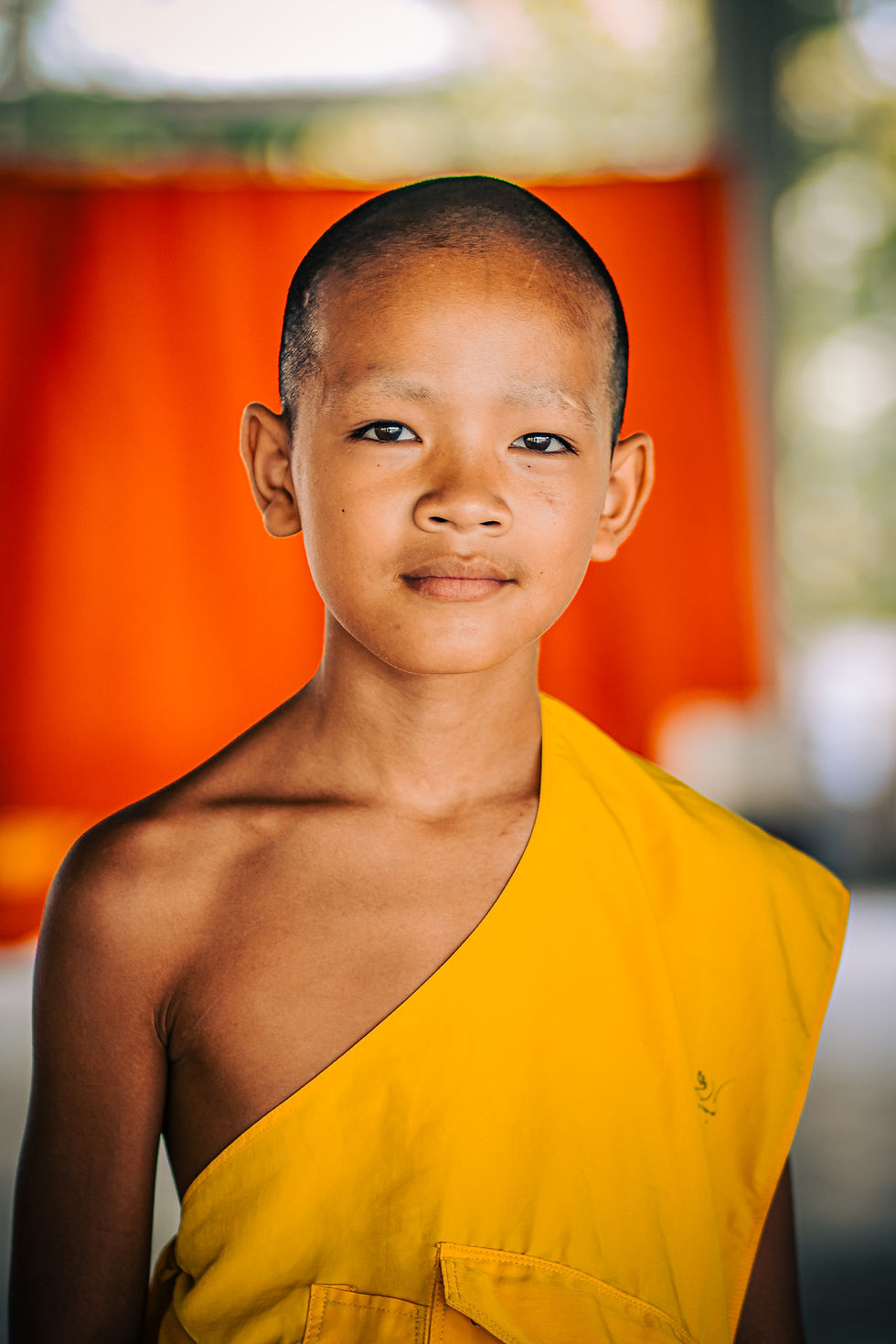
Seeing With the Heart
Photographing in a Thai temple is less about seizing a shot and more about receiving a moment. It’s about tuning into a space where every sound is softened, every gesture intentional, every lightbeam sacred. If you approach temples with reverence — not as a tourist or observer, but as someone willing to learn — the images you create will reflect that.

Let your lens be kind. Let your curiosity be quiet. Let the sacred speak for itself.
You are not there to take — you are there to witness, to honor, to reflect. And when you press the shutter with that kind of intention, your photography becomes something more than image-making — it becomes a respectful act of presence.
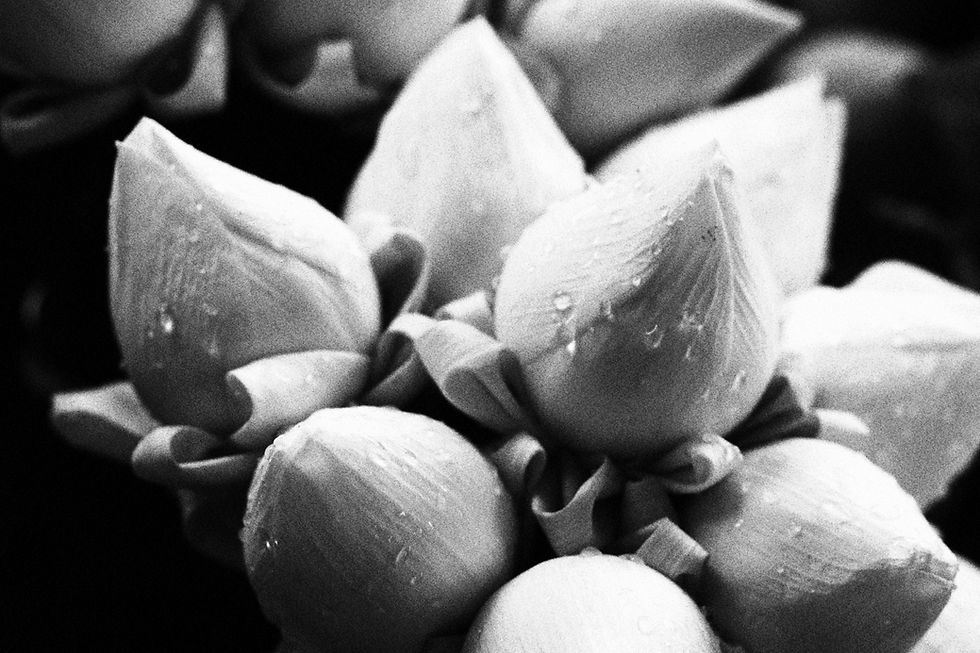


Comments